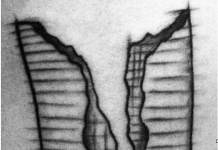09/11/1989
Maybe the date won’t ring a bell in your head, but for sure the name “Berlin Wall” will.
The 9th of November ‘89 is the date when that wall started to fall down, hit by hammers and by the feelings of all the people who lived divided in the same city for almost 20 years.
In the following 30 years, every school around Europe was speaking about this event – at least in one lesson for each class. What we’ve not been taught about is the number of walls still existing – and actually growing – in the world.
Let me tell you about one wall close to where I live: Nicosia is the last capital city still divided by a wall, which breaks the entire island (“this beautiful, little island in the middle of the Mediterranean Sea that three continents would like to have”, cit. Andreas) in two sides since 1974.
The roots of the division between “Greek Cypriots” and “Turkish Cypriots” can be found searching some historical knowledge in our memories. Let’s make “the long story short”.
If we think of Cyprus as “Aphrodite’s Island” we will immediately understand that it played an important role in the Greek mythology, and it has been a destination for many Greek people since early history. Afterwards, it has been part of the Roman Empire, the Easter Roman Empire, the Ottoman Empire, and finally the British Empire (which is why Cypriots drive on the left) before finally getting to independence in 1960. However, the internal division between the people who recognized themselves as Greek Cypriots and Turkish Cypriots (the ones who started living on the island under the Ottoman domination) remained, involving respectively Greece and Turkey – and their interests on the island. The following years were characterized by violence from both sides until, in 1964, the United Nations Peacekeeping Force in Cyprus (UNFICYP) established a cease-fire line (“the green line”) which divided Nicosia as well as the entire Island, a line that became an impassable “buffer zone” after the war in 1974, when Turkey occupied almost the 37% of Cyprus’s territory.
Many people, both Greek and Turkish Cypriots, were forced to leave their houses to move in “their side” of Cyprus. Many people, as in every war, died. Famagusta, in what is now the Northern Side of Cyprus, is an evident example of what people had to live in during that period: the ghost city, uninhabited and untouched since 1974 is still there on the coast of Famagusta accompanied by its bombed houses and empty streets.
The wall opened again in 2002 under indication of the European Union. Many people, however, decided to not come back even to visit “the other side”, for political but also sentimental reason. Andreas, an old man who lived this war on his skin, thinks it is just pointless and sad to go in the north to see his old house, maybe destroyed, maybe inhabited by other people.
The new generation of Cypriots, however, are working to build one Cyprus: it is the job of Home for Cooperation, an organization in the buffer zone which offers activities for people from both sides and, most importantly, to children from both sides. Their initiatives spread awareness on the importance of growing up together and understanding that we are all equal humans. These will hopefully allow people to understand that walls are not only unnecessary, but also dangerous when it comes down to human rights and dividing people.
How many other walls are there around the world? How many people actually want to build new ones? And, most importantly: which are the consequences of all these?
In the past, walls surrounded the cities and protected people from enemies. When exploring Cyprus, you will see the old walls of Nicosia, Famagusta, and Kyrenia (Girne). These walls are crossable only at specific points.
Now, again, walls are built around the world as “defence”, where “defence” actually means “let’s make clear that this is our territory, and not theirs”.
It’s the case of the striking wall between Israel and Palestine (another “green line”), that you can see with your eyes (and be shocked with your heart). A visit to Jerusalem, Bethlehem, and many territories amongst Palestine is a must, to increase your culture, your political knowledge and your sense of humanity.
It’s the case of the flaunted wall between Mexico and USA, of all the walls around the Middle East as defence from terrorism, and of the “defence of the border” as electoral topic of many right parties in Europe, as it was a real solution for the migratory waves we’re facing in these decades.














